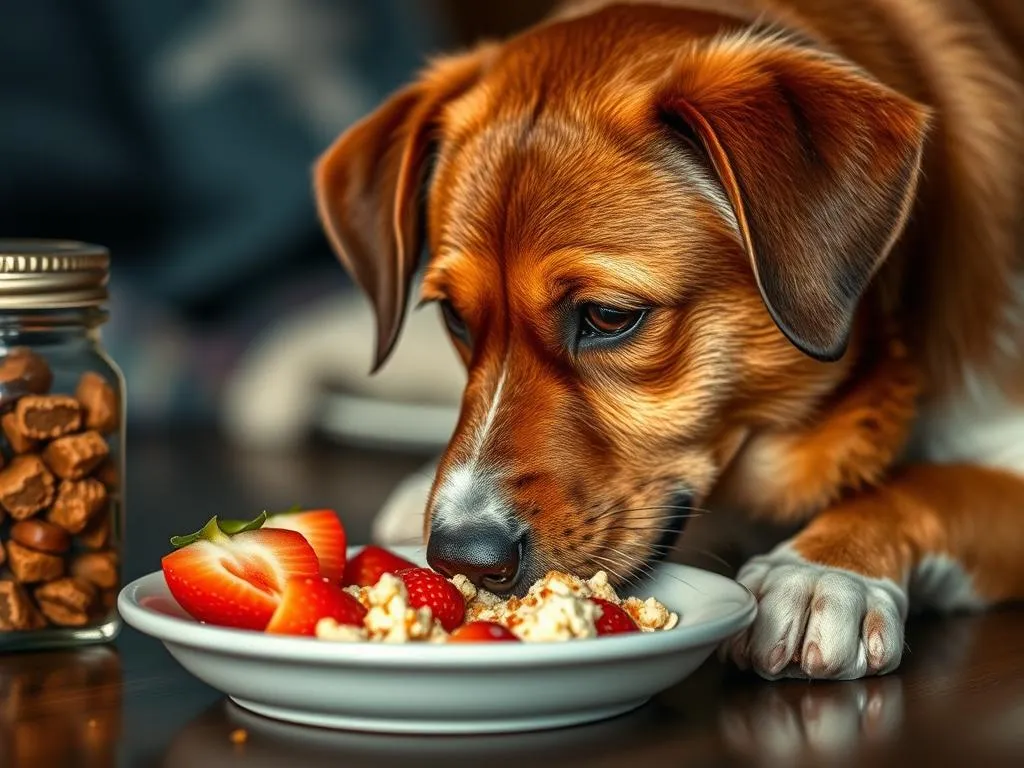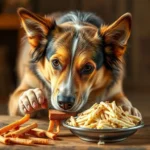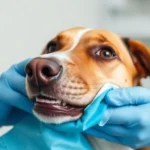
Introduction
Dog health care is an essential aspect of responsible pet ownership. Just like humans, dogs can suffer from various health issues, and understanding their behaviors is crucial for maintaining their well-being. One particularly puzzling and concerning behavior is when dogs eat things they shouldn’t. This behavior can not only pose health risks but also raises questions among dog owners. Why do dogs eat things they shouldn’t? Understanding the reasons behind this behavior is vital for dog owners who wish to ensure a safe and healthy environment for their furry companions.
In this article, we will delve into the various factors that contribute to this behavior, explore the potential health risks, and discuss effective management strategies. By the end, you’ll have a comprehensive understanding of why dogs engage in this behavior and how to mitigate it.
Understanding Canine Behavior
Basic Instincts and Natural Behaviors
To understand why dogs might eat things they shouldn’t, we must first consider their evolutionary background. Dogs are descended from wolves, which are natural scavengers. In the wild, scavenging is a vital survival skill that allows canines to find food sources when hunting is not successful. This instinct can lead to behaviors that are undesirable in domestic settings, such as eating non-food items.
Furthermore, chewing is an important part of a dog’s development. Puppies, for example, need to chew to relieve teething discomfort and to explore their environment. This natural inclination can sometimes result in chewing on inappropriate objects, leading to ingestion.
Curiosity and Exploration
Dogs are inherently curious creatures. They explore their environment primarily through smell and taste, which can lead them to ingest non-food items. For example, common household objects such as socks, shoes, and plastic wrappers can often end up in a dog’s mouth. This behavior is not always about hunger; rather, it’s an instinctual way for dogs to learn about their surroundings.
Stress and Anxiety
Stress and anxiety can significantly impact a dog’s behavior. Dogs may resort to eating inappropriate items as a coping mechanism when they feel anxious or stressed. Signs of anxiety in dogs can include excessive barking, pacing, and destructive behavior. If a dog is left alone for extended periods or experiences changes in their environment, these factors can exacerbate their stress levels, leading to inappropriate eating behaviors.
Common Reasons Dogs Eat Non-Food Items
Nutritional Deficiencies
One of the more concerning reasons why dogs eat things they shouldn’t is nutritional deficiencies. When dogs lack certain nutrients, they may develop a condition known as Pica, which compels them to eat non-food items. Common nutritional deficiencies in dogs include:
- Lack of minerals: If a dog’s diet lacks essential minerals like calcium or iron, they may seek alternative sources, including non-food items.
- Vitamin deficiencies: Insufficient vitamins can also lead to abnormal eating behaviors.
It is crucial for dog owners to provide a balanced diet to prevent these deficiencies and discourage inappropriate eating habits.
Boredom and Lack of Stimulation
Boredom is another significant factor that can lead to dogs eating inappropriate items. Dogs that do not receive enough physical and mental stimulation may resort to chewing and ingesting non-food items out of sheer boredom. Engaging dogs in playtime and providing them with stimulating activities can help prevent these behaviors. Some suggestions for stimulating activities include:
- Interactive toys: Toys that require problem-solving can keep a dog engaged.
- Regular exercise: Daily walks or play sessions can help expend excess energy.
- Training sessions: Teaching new tricks or commands can provide mental stimulation.
Behavioral Issues
Certain behavioral disorders can also lead to compulsive eating behaviors in dogs. These disorders may stem from a lack of socialization or training during crucial developmental periods. Understanding individual dog behavior is essential for addressing these issues. Early training and socialization can help prevent the development of these compulsive behaviors.
Health Risks of Eating Inappropriate Items
Digestive Problems
When dogs eat non-food items, they can face various digestive problems. Ingesting foreign objects may lead to gastrointestinal blockages, which can be life-threatening. Signs that a dog may have ingested something harmful include:
- Vomiting
- Diarrhea
- Abdominal pain or bloating
- Lethargy
Regular veterinary check-ups are important for monitoring your dog’s health and addressing any concerning behaviors.
Toxicity and Poisoning
Household items that are hazardous to dogs can lead to toxicity and poisoning. Common household items that are dangerous for dogs include:
- Chocolate
- Grapes and raisins
- Certain plants (like lilies)
- Cleaning products
Symptoms of poisoning can vary but may include vomiting, diarrhea, seizures, and lethargy. If you suspect your dog has ingested something toxic, it’s crucial to seek immediate veterinary assistance.
Surgery and Other Medical Interventions
In some cases, surgical intervention may be necessary to remove harmful objects from a dog’s digestive tract. This can be a costly procedure, and recovery may require careful monitoring. Timely veterinary care is essential to prevent complications and ensure the best outcome for your pet.
Prevention and Management Strategies
Training Your Dog
Training your dog to discourage unwanted eating behaviors is one of the most effective prevention strategies. Here are some tips for obedience training:
- Positive reinforcement: Reward your dog for good behavior with treats or praise.
- Consistency is key: Ensure that everyone in your household follows the same training protocols.
- Redirect attention: If your dog shows interest in non-food items, redirect their attention to appropriate toys or activities.
Creating a Safe Environment
Dog-proofing your home is another essential strategy for preventing your dog from eating inappropriate items. Here are some steps you can take:
- Safe storage: Keep household items, food, and trash out of your dog’s reach.
- Recommended dog-proof toys: Invest in durable toys designed for chewing to keep your dog occupied.
- Regular cleaning: Maintain a tidy environment to minimize the chances of your dog finding non-food items to chew on.
Regular Veterinary Visits
Routine veterinary visits play a significant role in monitoring your dog’s health. Vets can help identify any underlying issues that may contribute to inappropriate eating behaviors. If you notice persistent eating of non-food items, consult your veterinarian for professional advice on behavior management.
Conclusion
Understanding why dogs eat things they shouldn’t is crucial for responsible pet ownership. By recognizing the various factors that contribute to this behavior, dog owners can take proactive measures to ensure the health and safety of their pets. Whether it’s providing a balanced diet, engaging in regular exercise, or creating a safe environment, each step is vital in managing this puzzling behavior. Remember, vigilance and understanding are key to promoting your dog’s health and happiness.
Through training, a stimulating environment, and regular veterinary care, dog owners can help prevent their pets from engaging in this concerning behavior. Ultimately, a healthy dog is a happy dog, and knowledge is the first step toward achieving this goal.









